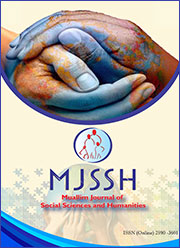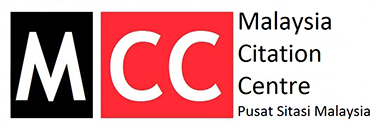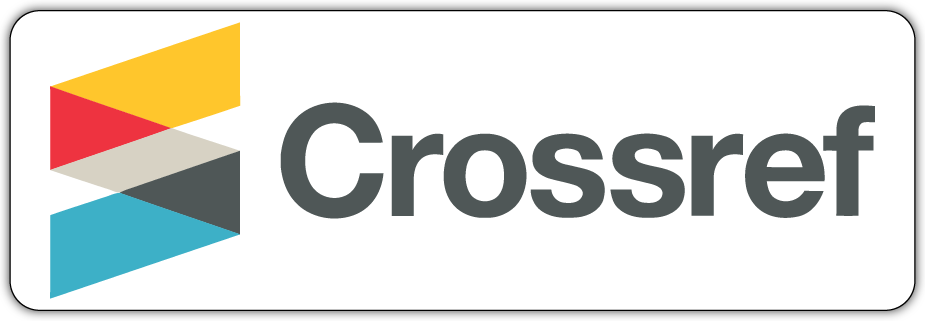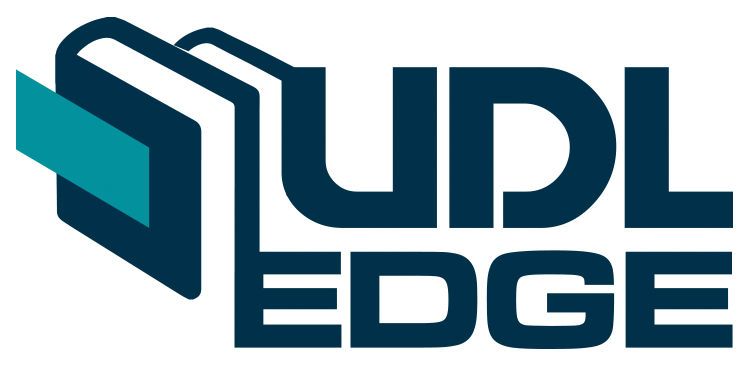Gaya kepimpinan kolaboratif pengetua dan tahap kepuasan kerja guru sekolah menengah kebangsaan [Principal collaborative leadership style and level of job satisfaction of national secondary school teachers]
Abstract
Collaborative leadership style is a leadership practice centered on cooperation, knowledge sharing and experience. Through collaborative leadership, social learning and communication processes can be done more effectively. The new policies introduced in the Malaysian education system add to the burden for educators to implement. This at the same time causes teachers to be dissatisfied with their work. Based on the literature, collaborative leadership style can help teachers in performing tasks more productively while increasing their level of job satisfaction. This study aims to identify the level of collaborative practice of principals, the level of job satisfaction of teachers, and the relationship between the two in national secondary schools in the district of Seremban, Negeri Sembilan. This survey study uses a quantitative approach involving 127 respondents and uses descriptive and inferential analysis. Data were obtained using the Robert Wood Johnson Collaborative Leadership and Job Descriptive Index (JDI) questionnaire which was translated and modified in the context of this study. The results show that the level of collaborative leadership practices of principals and the level of job satisfaction as a whole teacher are at a high level. The study also found that there was a positive and very strong relationship between principals' collaborative leadership practices and teacher job satisfaction level [r (127) = 0.885, p <0.01]. The findings of this study should be used as a guide by school administrators to better understand the problems and responsibilities of principals in improving the professionalism and job satisfaction of teachers as well as the performance of students and schools as a whole.
[Gaya kepimpinan kolaboratif merupakan satu amalan kepimpinan yang berpaksikan kerjasama, perkongsian pengetahuan serta pengalaman. Melalui kepimpinan kolaboratif, pembelajaran sosial dan proses komunikasi dapat dilakukan dengan lebih berkesan. Dasar baharu yang diperkenal di dalam sistem pendidikan negara Malaysia menambahkan beban buat para pendidik untuk melaksanakannya. Hal ini sekaligus menimbulkan rasa tidak puas hati para guru terhadap kerja mereka. Berdasarkan literatur, gaya kepimpinan kolaboratif dapat membantu para guru dalam melaksanakan tugas dengan lebih produktif sekaligus meningkatkan tahap kepuasan kerja mereka. Kajian ini bertujuan untuk mengenalpasti tahap amalan kolaboratif pengetua, tahap kepuasan kerja guru, dan hubungan kedua-duanya di Sekolah Menengah Kebangsaan di Daerah Seremban, Negeri Sembilan. Kajian berbentuk tinjauan ini menggunakan pendekatan kuantitatif melibatkan 127 orang responden dan menggunakan analisis secara deskriptif dan inferensi. Data diperolehi dengan menggunakan instrumen soal selidik Robert Wood Johnson Collaborative Leadership dan Job Descriptive Index (JDI) yang telah diterjemah dan diubahsuai dengan konteks kajian ini. Hasil kajian menunjukkan tahap amalan kepimpinan kolaboratif pengetua dan tahap kepuasan kerja guru secara keseluruhannya berada pada tahap yang tinggi. Kajian juga mendapati terdapat hubungan yang positif dan sangat kuat antara amalan kepimpinan kolaboratif pengetua dan tahap kepuasan kerja guru [r(127)=0.885,p<0.01]. Dapatan kajian ini wajar dijadikan panduan oleh pihak pentadbir sekolah untuk lebih memahami masalah dan tanggungjawab pengetua dalam meningkatkan profesionalisme dan kepuasan kerja guru serta prestasi pelajar dan sekolah secara keseluruhannya.]
Downloads
References
Adzmin & Suria Baba (2017). Amalan Kepemimpinan Kolaboratif Dalam Kalangan Pemimpin Instruksional Di Sekolah Rendah. Jupidi: Jurnal Kepimpinan Pendidikan, 4(3), 1-19
Harris, A. (2008). Distributed Leadership: Developing Tomorrow’s Leaders. London: Routledge.
Tan Kai Yee & Aida Hanim (2018). Kepimpinan Kolaboratif Guru Besar dan Hubungannya dengan Komitmen Guru Terhadap Sekolah. International Conference of Future Education and Advances 2018,Kuching, Sarawak, m.s. 1-8.
Wee Seng Huat & Mohammed Sani Ibrahim (2018). Kepimpinan Kolaboratif Guru Besar dan Hubungannya dengan Kepuasan Kerja Guru. International Conference of Future Education and Advances 2018,Kuching, Sarawak, ms. 17-23
Eizuan Mueizany Bin Abd Aziz & Asmah Binti Ahmad (2019). Pengetahuan Kepimpinan
Sinergi Kolaboratif dalam Kalangan Ketua Panitia Sains Sekolah Kebangsaan. Seminar Antarabangsa Isu-isu Pendidikan 2019, Kolej Universiti Islam Selangor.
Aniza (2014). Hubungan Kepimpinan Transformasional Ketua Jabatan Dengan Kepuasan Kerja Pensyarah di Politeknik Tuanku Syed Sirajuddin (PTSS). Artikel 2/2
Sidra, A., Zuhair, M.F., Noman, S. & Sajid, A. (2012). Role of Leadership in Change Management Process. Abasyn Journal of Social Sciences, 5(2), ms. 111-124.
Jamelaa Bibi Abdullah & Jainabee Md Kasim. (2013). Sikap Terhadap Perubahan dalam Kalangan Pengetua Sekolah Negeri Pahang dalam Prosiding Seminar Nasional Pengurusan dan Kepimpinan Pendidikan Ke-20, 2013, Institut Aminuddin Baki, Kementerian Pelajaran Malaysia.
Park, J.H. & Jeung, D.W. (2013). School Reforms, Principal Leadership and Teacher Resistence: Evidence from Korea. Asia Pacific Journal of Education, 33(1), m.s. 34-53.
Muijs, D. & Hariss, A. (2007). Teacher Leadership in (In) Action: Three Case Studies of Contrasting Schools. Educational Management Administration & Leadership, 35(1), m.s. 111-134.
Abdul Ghani & K. Anandan (2009). Pengaruh Kepemimpinan Transformasi Sekolah Dan Efikasi Kolektif Guru Terhadap Komitmen Kualiti Pengajaran. Seminar Nasional Pengurusan dan Kepimpinan ke-16, Institut Aminuddin Baki.
Syed Sofian & Rohany Nasir. (2010). Kesan Kecerdasan Emosi ke atas Tekanan Kerja dan Berhenti Kerja Profesion Perguruan. E-Bangi : Journal of Social Sciences and Humanities, 1(5), 53-68.
Chrislip, D. & Larson, C. (2002). The Collaborative Leadership Fieldbook: A Guide for Citizens and Civic Leaders. San Francisco, CA: Jossey-Bass.
Suryana & Sumantri. (2001). Perilaku Organisasi. Bandung: Universitas Padjajaran.
Ferdman, B. (2010). Bring Your Whole Self to Work. Personal Communication. Milwaukee, WI.
Ibrahim Guyah & Sedat Gumus. (2013). Multilevel Analysis of Teacher Work Attitudes. International Journal of Educational Management, Jil. 27, Isu 7, m.s 700-719.
Brown, Y. S. (2011). Parish Leadership: A Shared Responsibility—A Model of Collaborative Parish Leadership Formation, Engaging Ordained and Lay Ecclesiastical Ministers in the Los Angeles Archdiocese. A Dissertation Submitted to the Faculty of the School of Theology and Religious Studies of the Catholic University of America in Partial Fulfillment of the Requirements for the Degree Doctor of Ministry Washington, D.C.
Saratna, W. (2014). Leadership and Various Contemporary Perspectives. Bangkok, Tipborisut Co. Thailand.
Hallinger, Philip & H. Heck. Ronald (2010). Collaborative Leadership and School Improvement: Understanding the Impact on School Capacity and Student Learning, School Leadership & Management: Formerly School Organisation, 30:2, m.s 95-110.
Merrill L. Meehan & William (2003). Collaborative Partnerships between Educational Organizations; Extent of Independence Interdependence and Satisfaction with Collaboration. San Francisco, USA, Josey Bass.
Hammarberg K. et al. (2016). Qualitative Research Methods: When to Use Them and How to Judge Them. Human Reproduction, 31 (3), pp. 498-501, https://doi.org/10.1093/humrep/dev334.
Hanlon B. & Larget B. (2011). Samples and Population. The Scientific Literature. Department of Statistics, University of Wisconsin-Madison. Dicapai melalui http://pages.stat.wisc.edu/~st571-1/03-samples-4.pdf pada November 15, 2020.
Krejcie, R. V. & Morgan, D. W. (1970). Determining Sample Size for Research Activities. Educational and Psychological Measurement. 30, m.s. 607-610.
Robert W.J. (2002). Collaborative Leadership, Self-Assessment Tools. Route 1 and College Road East, Princeton, NJ 08543.
Lester, P. E. (1987). Development and Factor Analysis of the Teacher Job Satisfaction Questionnaire. Educational and Psychological Measurement, 47(1), m.s. 223-233.
Chua Yan Piaw. (2014). Ujian Regresi, Analisis Faktor dan Analisis SEM. Published by McGraw-Hill Education (Malaysia).
Chua Yan Piaw (2006). Kaedah Penyelidikan Buku 1. McGrawHill (Malaysia) Sdn. Bhd.
Landell. K. (1977). Management By Menu. Wiley&sons Inc, Landon.
Growe, R. (2011). Collaborative Leadership in the Era of New Normal. National Forum Of Educational Administration And Supervision Journal, 29(4).
Junaidah Mohamad & Nik Rosila Nik Yaacob (2013). Kajian Tentang Kepuasan Bekerja Dalam Kalangan Guru-guru Pendidikan Khas. Asia Pacific Journal of Educators dan Education, Jil.28, m.s. 103-115.

This work is licensed under a Creative Commons Attribution-NonCommercial 4.0 International License.











 This work is licensed under a
This work is licensed under a